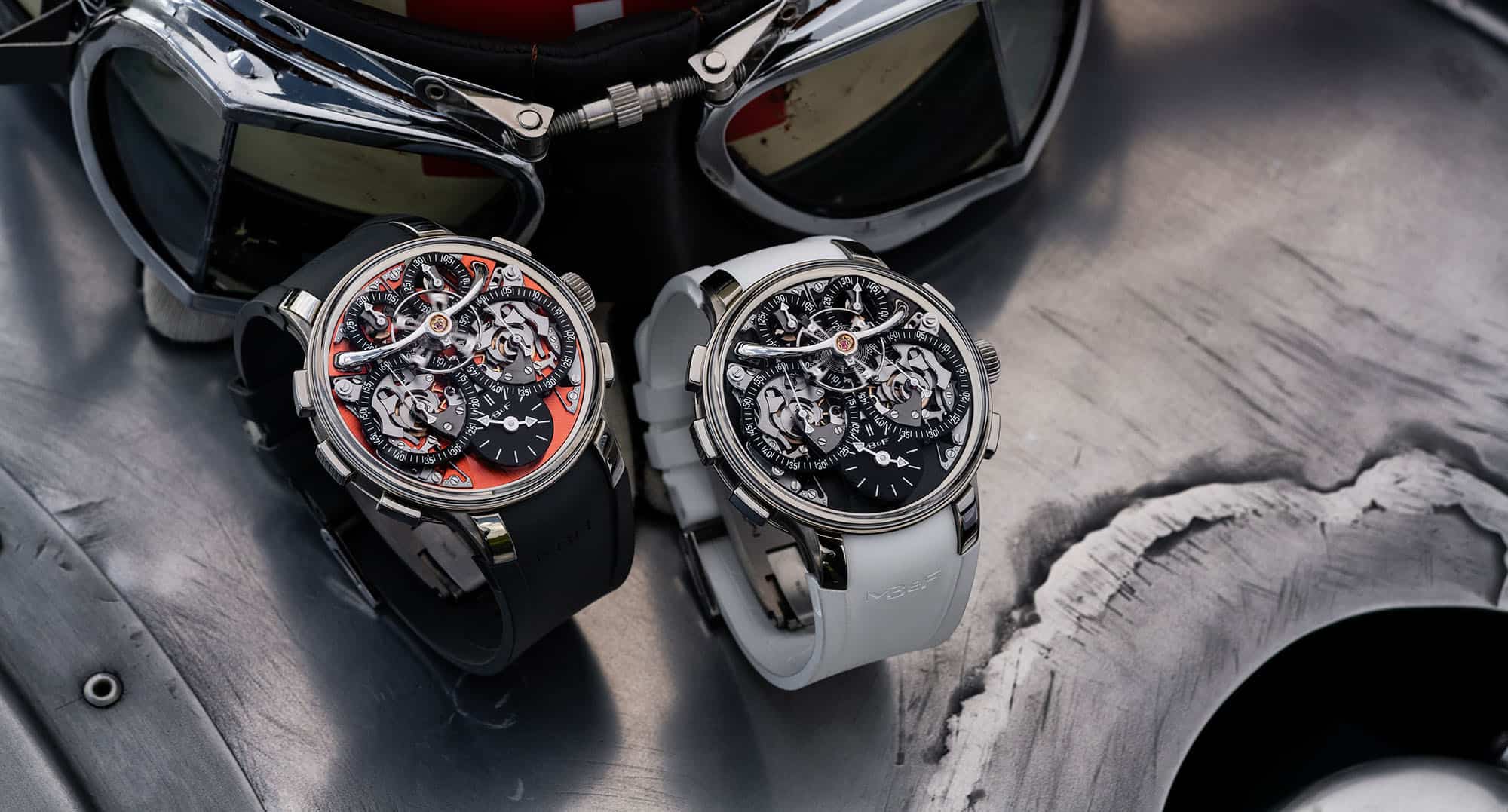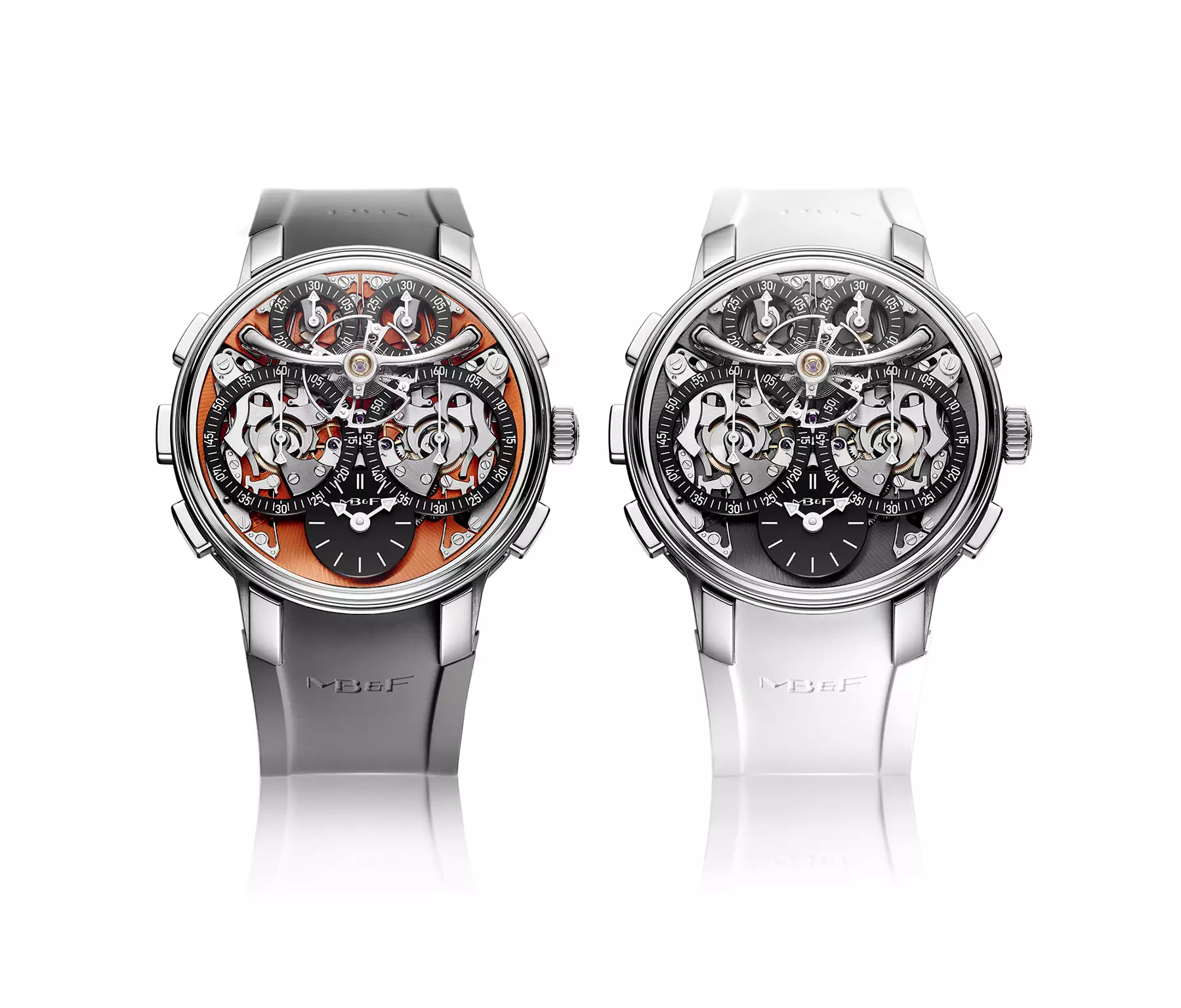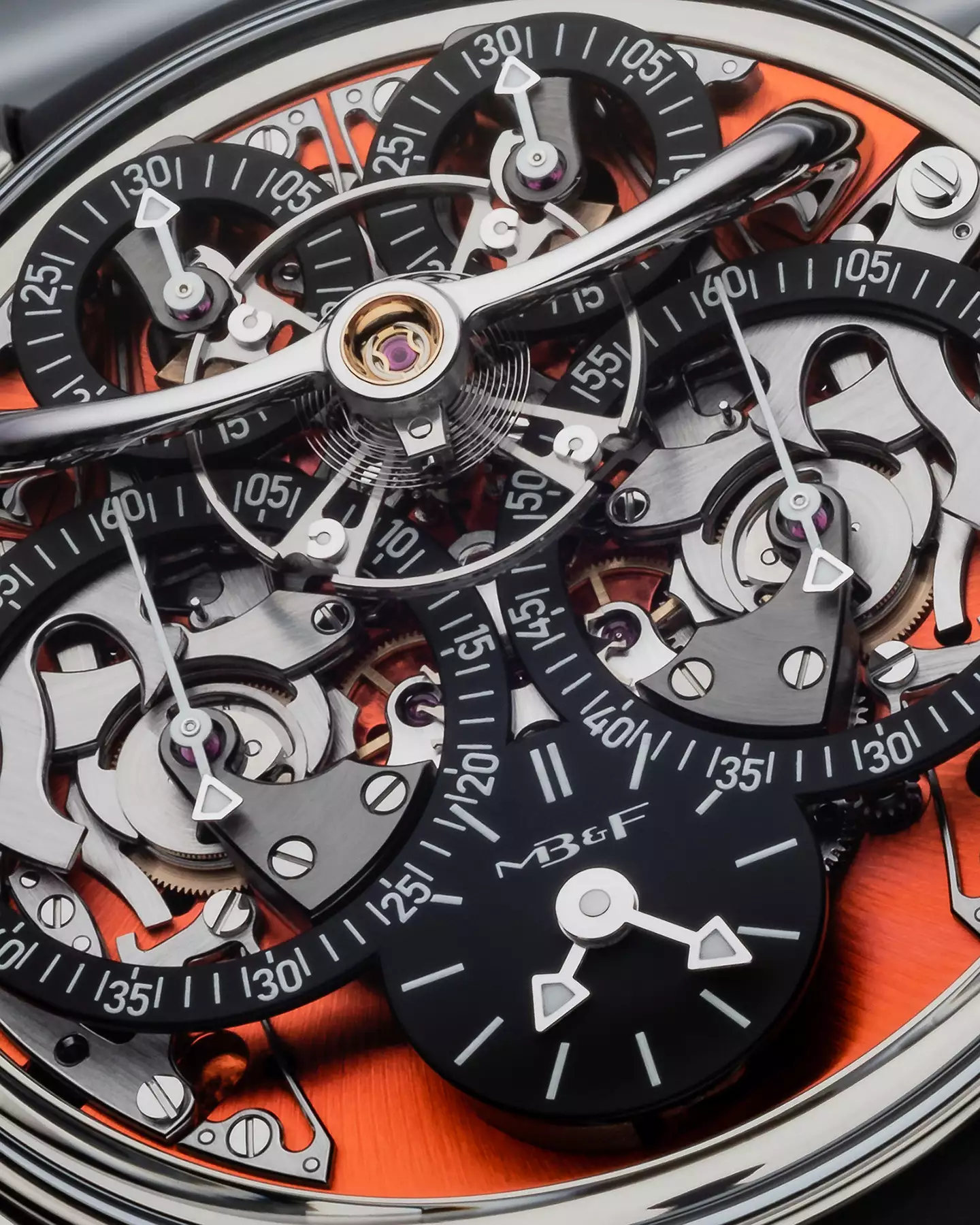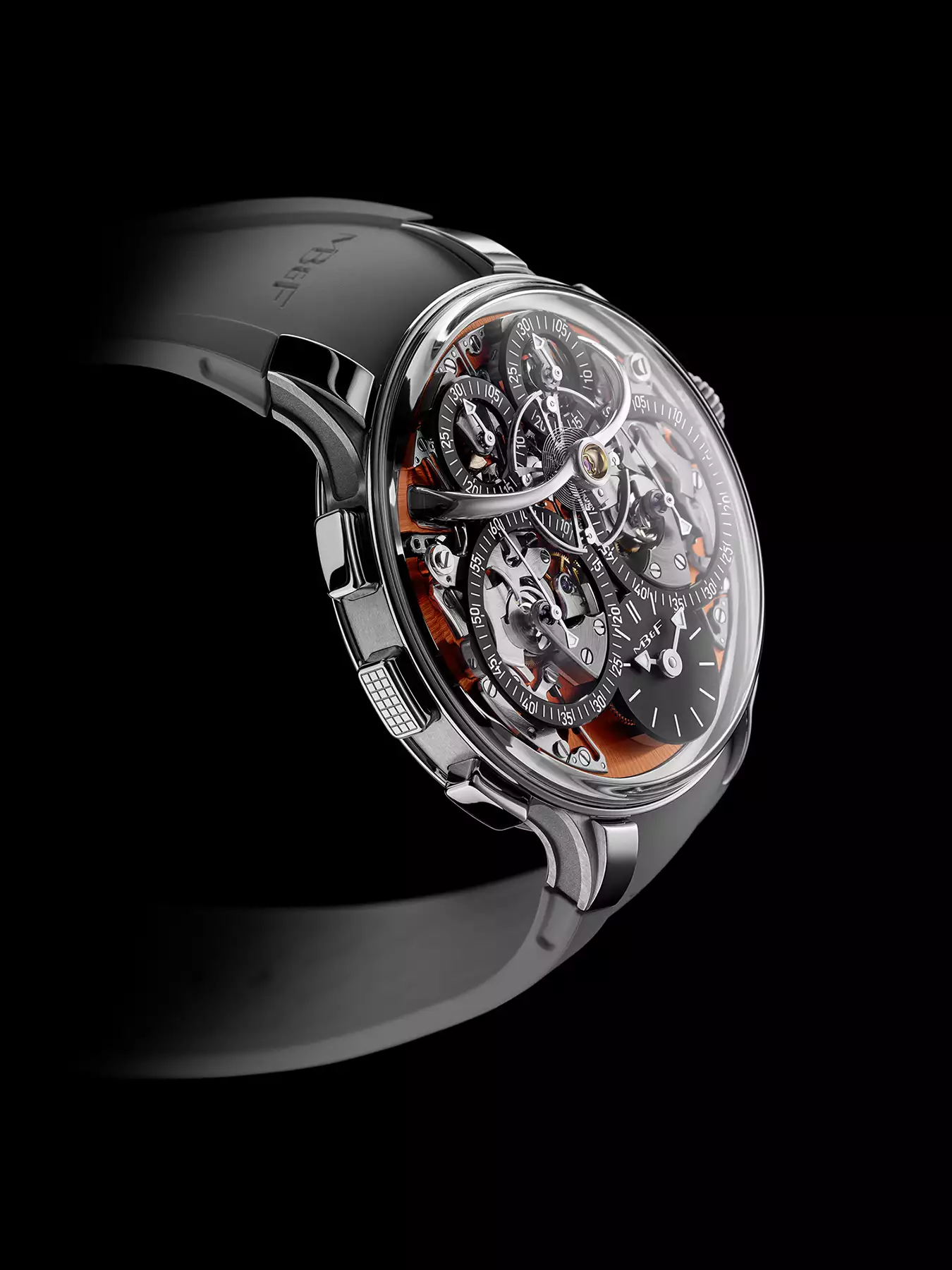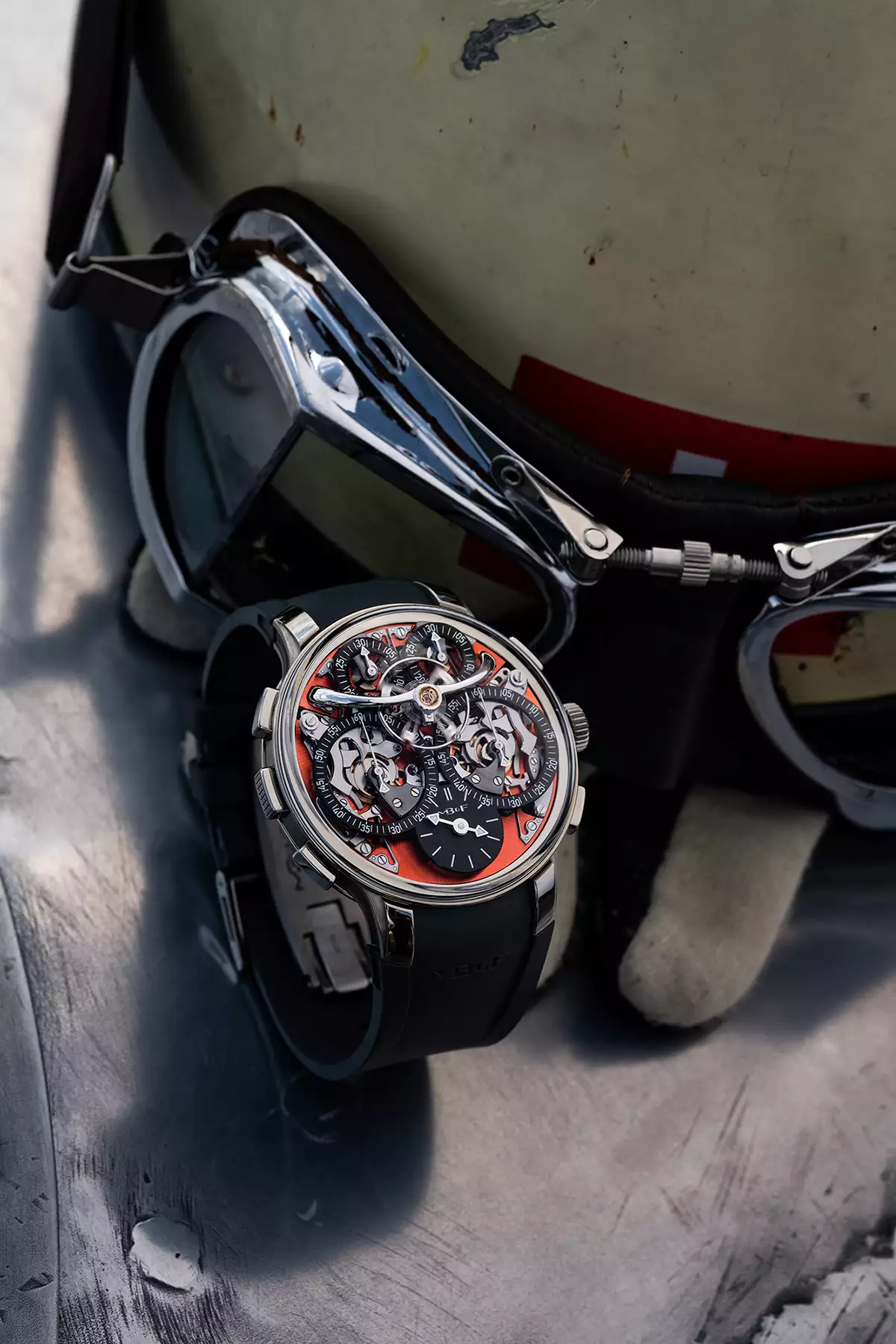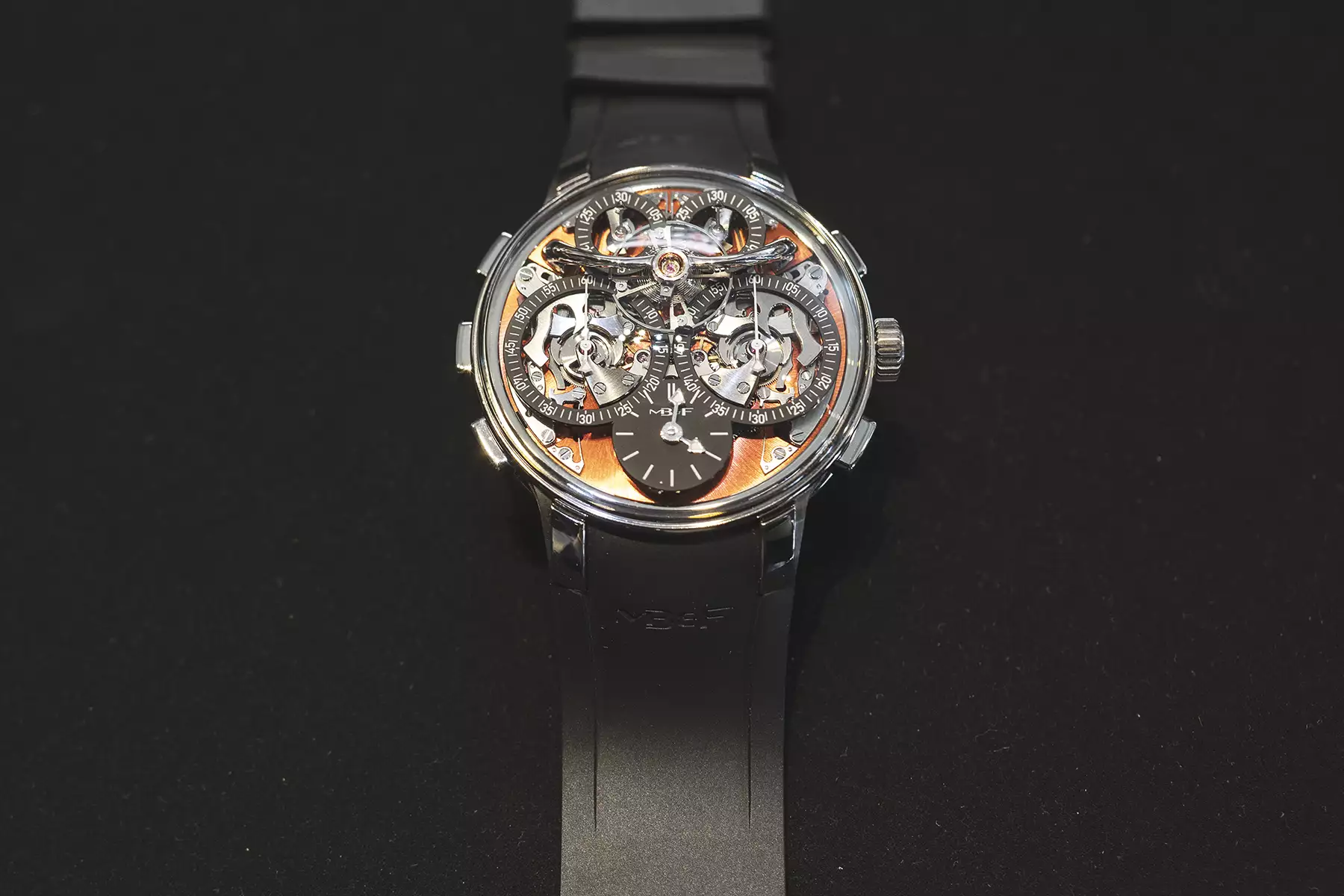The chronograph is a pretty straightforward complication, used to time things that need timing, like laps around the track, or more realistically, boiling noodles and making sure your kid stays in timeout for the appropriate length. Start, stop, and reset, sometimes with a split seconds hand, sometimes with flyback functionality, but largely adhering to the same basic formula. The chronograph gets a another implementation today courtesy of MB&F, and movement designer, Stephen McDonnell in the form of the LM Sequestional EVO, a watch with dual sequential chronographs operating independently, linked via “Twinverter”, and each utilizing a vertical clutch and gear train with a single escapement at their confluence. It’s novel, and it’s wild, and we’d expect nothing less from the same mind that gave us the LM Perpetual.
The LM Sequential is the first MB&F watch to get a seconds hand of any kind, and being MB&F, they implemented it (them) in a way that’s never been done before. Each sits within a large ring sub dial that dominate the left and right halves of the dial, and each sits at the center of a mirrored chronograph system that are capable of working independently of the other, or in concert with each other. Each gets their own set of actuators, and they are linked by a 5th button called the Twinverter (more on that in a minute). A 30 minute totalizer sits atop both of the timing seconds dials, and a single dial at 6 o’clock displays the time in minutes and hours. A power reserve indication for this hand wound movement is placed on the back of the movement.









 Featured Videos
Featured Videos




